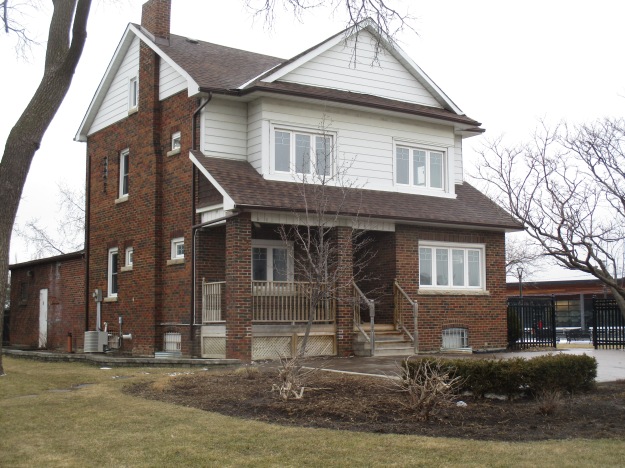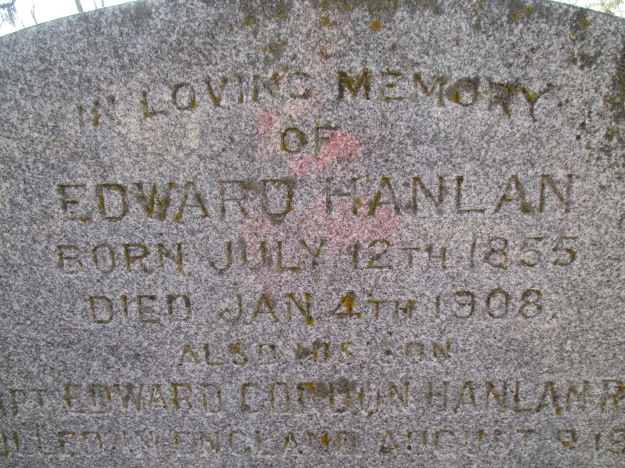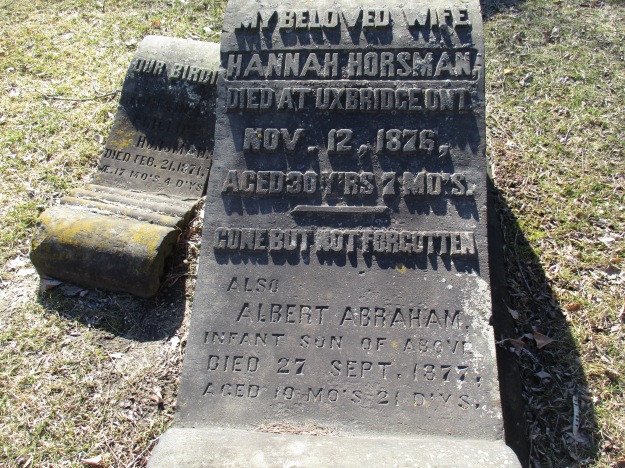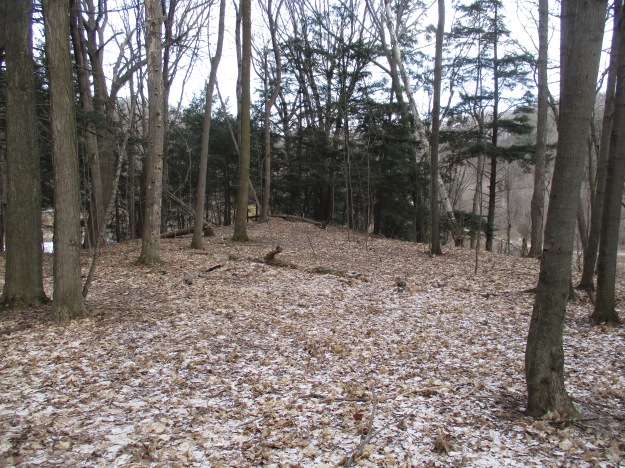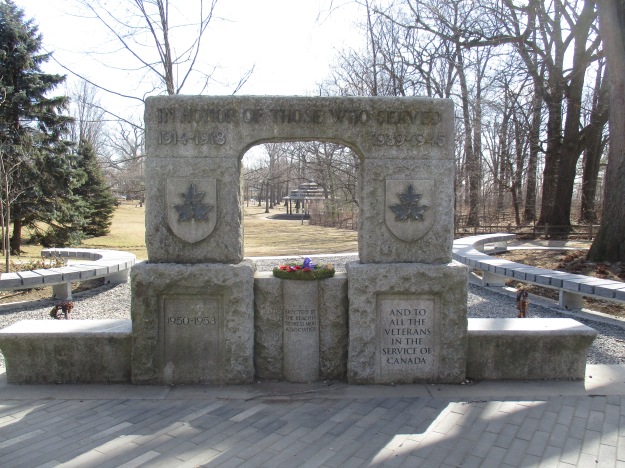Saturday, March 25, 2017
Joshua Creek is the largest of Halton’s urban creeks. These 14 watercourses run through Oakville and Burlington but have their headwaters and the entire stream confined within the city. Joshua Creek has it’s headwaters near the 407 and runs close to the border between Mississauga and Oakville. The creek passes through fully engineered sections with armour stone or gabion baskets while other parts flow through naturally forested areas. The sections on the northern reaches still flow through open farmland and the creek boasts one of the best water qualities in the county. The hike roughly covers the section of Joshua Creek highlighted in blue on the 1877 County Atlas below. Note the rows of apple trees shown on the map between the creek and the lake. Some of these orchards remain and can be seen as you walk along the creek.

A set of stairs descends from a trail linked to Breton Close where there is free parking. These stairs come with a “V” channel on one side to make it a lot less bumpy if you wish to bring a bicycle onto the Joshua Creek Trail. The section of Joshua Creek near the stairs has been plated with armour stone but much of the creek from this point to Lake Ontario has been left in a more natural channel.

American Beech is one of a half a dozen species, mostly oak, that can hold their leaves over the winter. These beech trees can live for 300 years and tend to grow slowly, taking 20 years to reach 13 feet in height. In Ontario they are late succession trees that form a part of the Beech – Maple climax forest. Cleared land will progress from low bushes like sumac and hawthorn to ash and birch trees. Maple, Beech and Oak trees are signs of a mature forest. Beech trees can reach 100 feet tall and the canopy can spread to 70 feet wide. Small beech trees grow in several stands along the creek. Emerald Ash Borer is a significant problem in Joshua Creek and many of the trees have had to be removed. This opens up the canopy and will allow the beech trees to have their moment in the sun.

Footprints leading up to this fallen tree indicate that humans and the local wildlife both use it as a bridge. It is certainly wide enough but being wet and slippery precluded crossing on this wet morning.

The lower trail was muddy in places, unlike the main trail up on the top of the ravine which has been treated to chipped up pieces of Christmas trees.
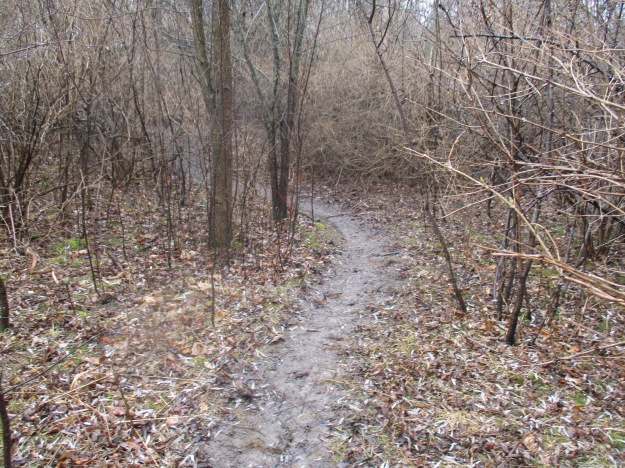
Snowdrops are native to Europe and the Middle East. They were brought to North America as an ornamental plant for use in gardens. Non-native plants can be divided into two categories, those that need human intervention to survive in their new environment and those that don’t. The ones that can survive on their own can further be divided into naturalized and invasive. Naturalized plants can survive on their own and in time become part of the local flora. Those that are invasive will crowd out native plants and often release toxins into the soils to prevent the growth of competing plants. Snowdrops are considered to be naturalized rather than invasive because they don’t spread rampantly and they fit in with the local habitat.

Beavers once filled the rivers and streams of Ontario. Trapping for the fur trade had virtually eliminated the beaver from Southern Ontario by the 19th century. Beaver moving back into urban centres has become more common over the past few decades as water qualities have been improved. New York City, for instance, saw its first beaver in over 200 years in 2007 and High Park in Toronto now has a lone beaver living in Lower Duck Pond. Beaver can be very destructive and the trees along Joshua Creek show significant damage from the local beaver. At one point we saw a place where it appears that the beaver have built a lodge under the roots of a tree along the embankment. Further downstream we found the place where the beaver have built their dam. The dam has been breached by recent high water but they won’t take long to repair it.

Several foundations line the creek from the days before the estate lands were divided for smaller homes. The cover photo shows a set of stone stairs that lead down to the edge of the ravine above the creek. The steps suddenly end with a long drop into the water. Whatever once stood at the end of that stairway is long gone as is the building that once stood on the foundation below.

Charles Powell Bell and his wife Kathleen Harding moved into their estate home near the mouth of the creek in 1938. The house and garage originally stood on 60 acres and had the early name “Fusion” although it was usually known as Harding House. It is said that the spirit of a woman can be seen regularly at the house and spirits of a boy and an angry spirit of a man have also been uncovered by paranormal investigators. The house has been given a heritage designation in 1989 and currently is used as an event facility. The house has been known as Holcim Waterfront Estate but it is being renamed Harding Waterfront Estate.

The mouth of Joshua Creek has had a few pieces of armour stone dropped in to create a small break wall to provide some protection.

Looking to the east from the mouth of the creek you can see the Petro Canada refinery dock that extends 700 metres out into the lake. Equipment towers stand on the end of the dock to transfer oil from tankers. To the west, there is a brief shingle beach revealing the natural shoreline along this part of the lake. The point in the distance marks the beginning of the armour stone that has been applied to the shore in an attempt to slow down erosion. The lake was crashing into the chunks of limestone and sending spray high above them.

Taking the upper trail on the return trip leads past the Oakville South East Waste Water Treatment Plant.

The creek runs north from Breton Close as well, and hopefully, we’ll return next week and see what lies in that direction.
Google Maps Link: Joshua Creek
Like us at http://www.facebook.com/hikingthegta
Follow us at http://www.hikingthegta.com

















